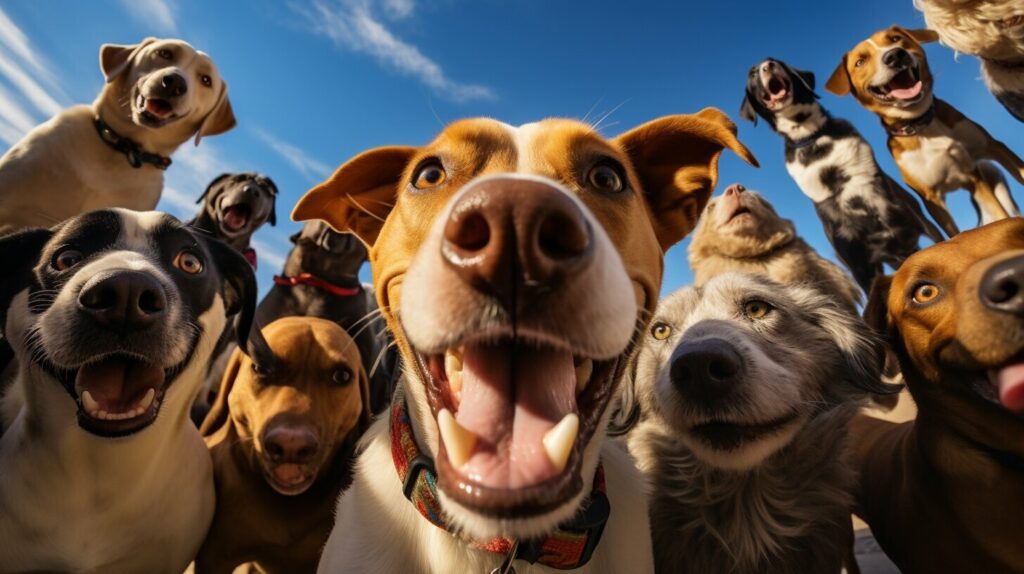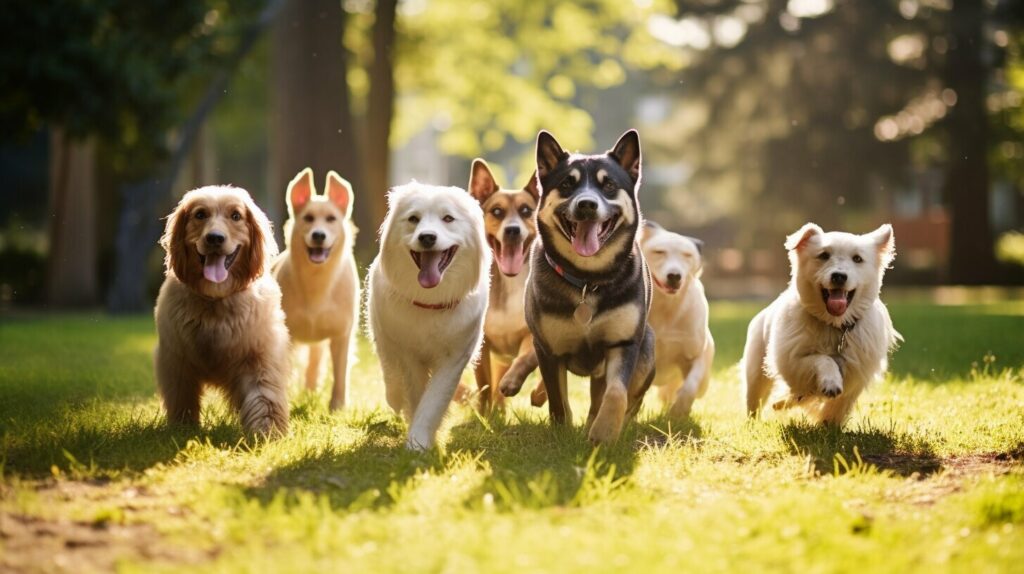As a responsible pet owner, understanding your dog’s anatomy is essential to their overall health and well-being. You may have wondered, “Do dogs have a belly button?” – a common question among dog owners. The answer may surprise you.
In this article, we’ll explore the existence of a belly button in dogs and its significance in their biology. We’ll delve into the unique characteristics of canine anatomy and offer practical tips for caring for your dog’s navel. Join us as we uncover the furry facts surrounding this intriguing aspect of dog anatomy.
Key Takeaways:
- Dogs do have a belly button, although it may not be as pronounced or visible as in humans
- The umbilicus in dogs develops during early stages of life and may be visible as a small scar in adulthood
- Regular monitoring and veterinary care is crucial in maintaining the health of your dog’s navel
Understanding Canine Anatomy
As a responsible pet owner, it’s essential to understand your dog’s anatomy, including their belly button or, more accurately, their umbilicus. While humans have a visible belly button, it’s not always easy to identify the canine equivalent, which is known as the canine navel.
Dog anatomy is different from human anatomy in several ways. Unlike humans, dogs have a four-chambered stomach, which allows them to digest raw meat and bones more efficiently. Additionally, their skeletal system is highly adaptable, enabling them to run and jump with ease. Understanding your dog’s unique anatomy helps you recognize any potential health issues and provide appropriate care.
When it comes to a dog’s navel, it’s easy to assume that they have a visible belly button similar to humans. However, the canine umbilicus is not as pronounced, and in some cases, it may not be visible at all. Unlike humans, who have a visible scar that represents the site of the umbilical cord, dogs have an abdominal scar that marks the former location of the umbilicus.
Canine Belly Button vs. Human Belly Button
While humans have a visible belly button, dogs lack the same feature. A dog’s umbilicus is where the umbilical cord was attached to their mother’s placenta during gestation. After birth, this cord is cut, and the remaining tissue dries up and falls off, leaving behind a small nub known as the canine navel. This is where the scar forms, indicating the location of the umbilicus.
While a dog’s belly button may not be as visible as a human’s, it’s still an essential part of their anatomy. The umbilicus serves as a critical connection between a mother and her newborn pups, providing essential nutrients and oxygen during gestation.
The Truth About Dog Belly Buttons
If you’ve ever wondered whether dogs have a belly button, the answer is yes! However, it may not be as obvious as in humans.
During early stages of development, a puppy’s umbilicus is vital for receiving nutrients and oxygen from its mother. As the puppy grows and becomes more independent, the umbilicus gradually becomes less prominent.
In some cases, a dog’s navel may still be visible as a small scar or indentation on their abdomen. However, it’s important to note that not all dogs have visible belly buttons.
While the appearance of a belly button may not have any significant impact on a dog’s health, it’s still important to be aware of its existence. In some rare cases, abnormalities or complications with the umbilicus may occur, requiring veterinary attention.
Identifying the Canine Belly Button
Locating a dog’s belly button can be tricky as it may not be as prominent as in humans. However, it’s an essential part of your pet’s anatomy that you should understand as a responsible pet owner. Here’s how to find it.
Firstly, look for a small scar in the center of your dog’s abdomen. This scar indicates the previous location of the umbilical cord, which is also your dog’s navel. If your dog had surgery, there may be an additional scar, which could make it challenging to identify the belly button.
To get a clearer view, gently move your fingers across your dog’s hair until you feel a small lump or indentation. This lump is the umbilicus, and you can use this to identify the location of your dog’s belly button. You can also use a flashlight to help you find it by shining it over your dog’s abdomen and looking for the small indentation.
Remember that every dog is unique, so the visibility of the belly button may differ from one breed to another. Some dogs have more fur around the abdominal area, which could make it more challenging to locate the belly button. However, with patience and persistence, you can always find it.
Knowing how to locate your dog’s belly button can help you recognize any potential abnormalities, such as swelling or discharge. You can monitor changes in the belly button regularly and seek veterinary care if necessary.
Now that you know how to identify your dog’s belly button, be sure to check it regularly and maintain proper hygiene to keep your pet healthy and happy.
Fascinating Dog Anatomy Trivia
Did you know that dogs have three eyelids? It’s true! The third eyelid, also known as the nictitating membrane, helps protect and moisten the eye.
Another interesting fact about canine anatomy is that while humans have 206 bones, dogs have an average of 320 bones! This variation is due to differences in the tail and limb structure.
Now, onto the topic at hand. While it’s true that dogs do not have a belly button as humans do, the remnants of their umbilical cord can be seen as a small scar on their abdomen. This scar may be more visible in some breeds than others, but rest assured that all dogs have an umbilicus.
Why is this scar important? Well, knowing the location of your dog’s umbilicus can help you identify and monitor any potential issues with their abdomen, such as swelling or inflammation. It’s important to regularly check this area and seek veterinary attention if you notice any abnormalities.
So, now you know the truth about dog belly buttons (or lack thereof) and some fascinating trivia about canine anatomy. Impress your friends with these fun facts and continue to explore the amazing world of dog biology!
The Importance of Understanding Your Dog’s Navel
As a responsible pet owner, it is crucial to have a solid understanding of your dog’s anatomy, including their navel or belly button. The umbilicus, or the spot where the umbilical cord attaches during fetal development, plays an essential role in a dog’s early growth and development.
While a dog’s navel may not be as noticeable as a human belly button, it is still a vital part of their anatomy and requires proper care and attention. Regular monitoring and checking for any abnormalities or changes can help prevent potential health concerns or complications in the future.
Issues with a dog’s navel can include infections, hernias, or irregularities in the healing process after surgery or injury. By being aware of your dog’s navel and seeking veterinary care if necessary, you can ensure the health and well-being of your furry friend.
Establishing a trusting relationship with your veterinarian is essential in caring for your dog’s navel. Your vet can provide guidance on proper hygiene, identifying potential issues, and addressing any concerns you may have. By working together, you can ensure the continued health and happiness of your beloved pet.
Caring for Your Dog’s Belly Button
Proper hygiene and care for your dog’s belly button, or navel, is crucial for their overall health. While a dog’s belly button may not be as visible or pronounced as in humans, it is still important to take care of it.
First, it is essential to regularly check your dog’s navel for any signs of irritation or infection. Look for redness, swelling, discharge, or any other abnormalities. If you notice any of these symptoms, contact your veterinarian immediately.
Gentle cleaning is crucial for maintaining a healthy belly button. Use a clean, damp cloth to wipe the area around the navel, being careful not to apply too much pressure. Avoid using harsh chemicals or soaps, as they may cause irritation or further complications.
Regular veterinary care is also essential for monitoring the health of your dog’s navel. Your vet can provide guidance on proper cleaning techniques and identify any potential issues early on.
Overall, caring for your dog’s belly button is a vital part of responsible pet ownership. By maintaining proper hygiene and seeking veterinary care when necessary, you can ensure the well-being of your furry friend.
Popular Myths About Dog Belly Buttons
As with many aspects of our furry friends’ biology, myths and misconceptions often abound. Below, we debunk some of the most common myths about dog belly buttons:
- Myth: Dogs don’t have belly buttons.
- Myth: If you can’t see a dog’s belly button, they don’t have one.
- Myth: A visible belly button means a dog is unhealthy.
This is a widespread myth. In fact, dogs do have belly buttons, just like all mammals that develop in the womb, including humans. While they may not look the same as human belly buttons, they are present and serve a similar purpose.
Just because a dog’s belly button may not be as noticeable as a human’s doesn’t mean it’s not there. Dogs’ umbilical cords are usually cut very close to their body, so it’s common for their belly buttons to be less visible or even hidden by fur. However, if you look closely, you can usually locate your dog’s belly button.
Visible belly buttons do not necessarily indicate any health issues. As noted, the visibility of a dog’s belly button can be affected by a variety of factors, including fur length and coloration. While it’s always important to monitor your dog’s health, the presence or absence of a visible belly button should not be a primary concern unless there are other symptoms to indicate a problem.
By knowing the truth about dog belly buttons, you can avoid falling prey to these common myths and better understand your furry friend’s biology.
The Importance of Understanding Your Dog’s Navel
As a responsible pet owner, it’s crucial to have a thorough understanding of your dog’s anatomy, including their navel. While the presence or absence of a belly button in dogs may seem like a minor detail, it can potentially indicate underlying health issues or abnormalities.
By regularly checking your dog’s navel, you can detect any potential problems early on, allowing for prompt medical attention. Additionally, establishing a routine for monitoring your pet’s umbilicus can help strengthen your bond and deepen your connection with them.
It’s essential to establish a relationship with your veterinarian and seek their guidance on any concerns related to your pet’s anatomy. Regular check-ups can prevent or address any potential issues, ensuring your dog’s overall health and well-being.
Why Regular Monitoring is Important
While your dog’s navel may not require constant attention, regular monitoring can help detect any changes or abnormalities. Keep an eye out for any redness, swelling, or discharge around the umbilicus. These could be signs of an infection or other medical concerns.
If you notice anything unusual, it’s crucial to contact your veterinarian right away. Early intervention can prevent any potential complications and ensure that your pet gets the care they need. By taking proactive steps to monitor your dog’s belly button, you can help keep them happy and healthy.
Conclusion
Understanding your dog’s anatomy, including their navel, is an essential aspect of responsible pet ownership. By regularly monitoring your pet’s umbilicus and seeking guidance from a veterinarian when needed, you can ensure their overall health and well-being. Remember, the presence or absence of a belly button in dogs is just one small detail in their complex biology, but paying attention to these little things can make a big difference in your furry friend’s life.
FAQ
Q: Do dogs have a belly button?
A: Yes, dogs do have a belly button, also known as an umbilicus. However, it may not be as pronounced or visible as in humans.
Q: How can I identify my dog’s belly button?
A: To identify your dog’s belly button, look for a small scar on their abdomen. This scar signifies the former location of the umbilicus.
Q: Why is it important to understand my dog’s navel?
A: Understanding your dog’s navel is important as it can help you recognize any potential health concerns or abnormalities associated with the umbilicus. Regular checking and monitoring can prevent any issues.
Q: How should I care for my dog’s belly button?
A: To care for your dog’s belly button, maintain proper hygiene by gently cleaning the area. Regular veterinary care is also essential to ensure the well-being of the umbilicus.
Q: Are there any popular myths about dog belly buttons?
A: Yes, there are some common myths about dog belly buttons. However, it is important to note that dogs do have a belly button, and any misconceptions should be debunked with factual information.



